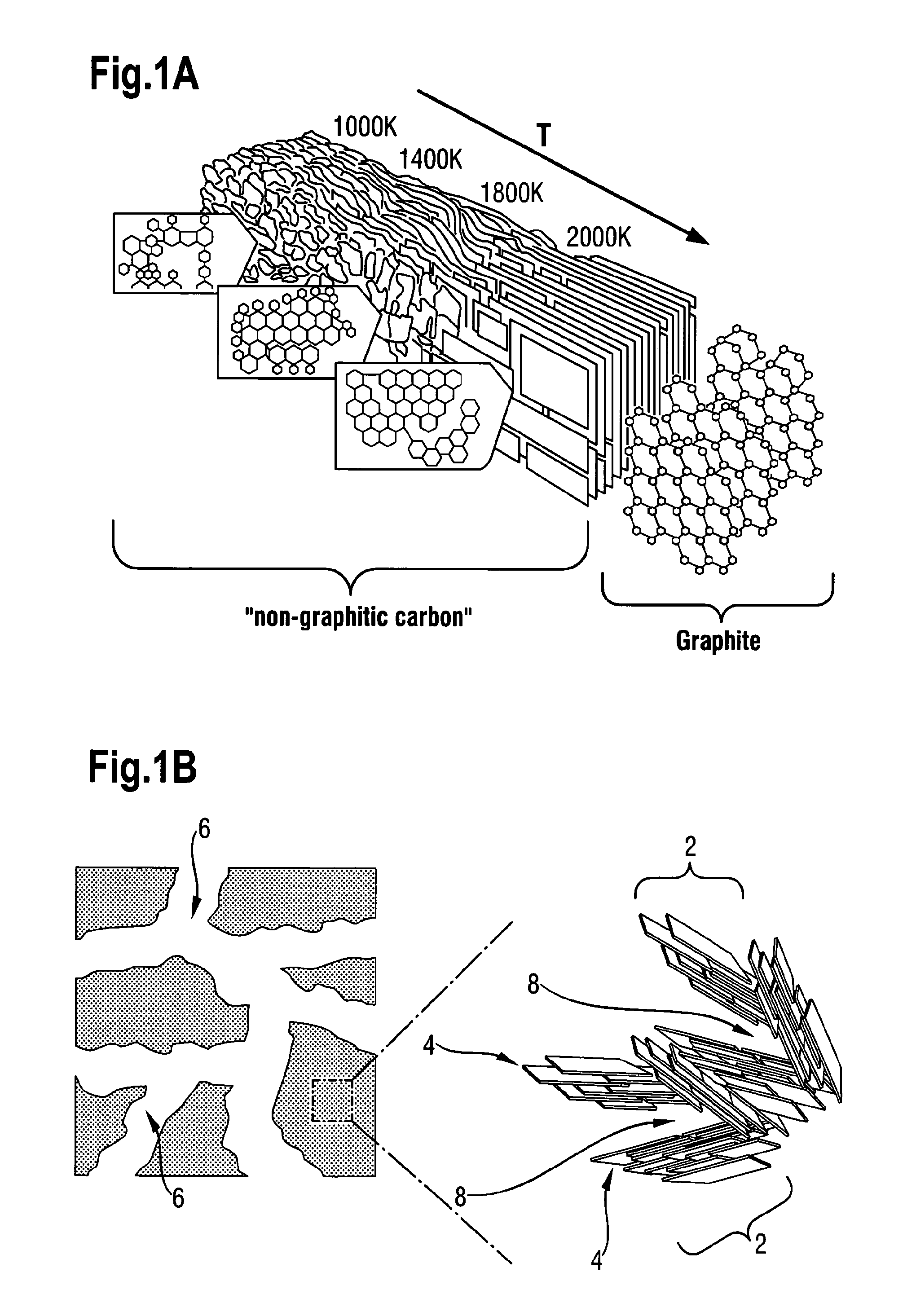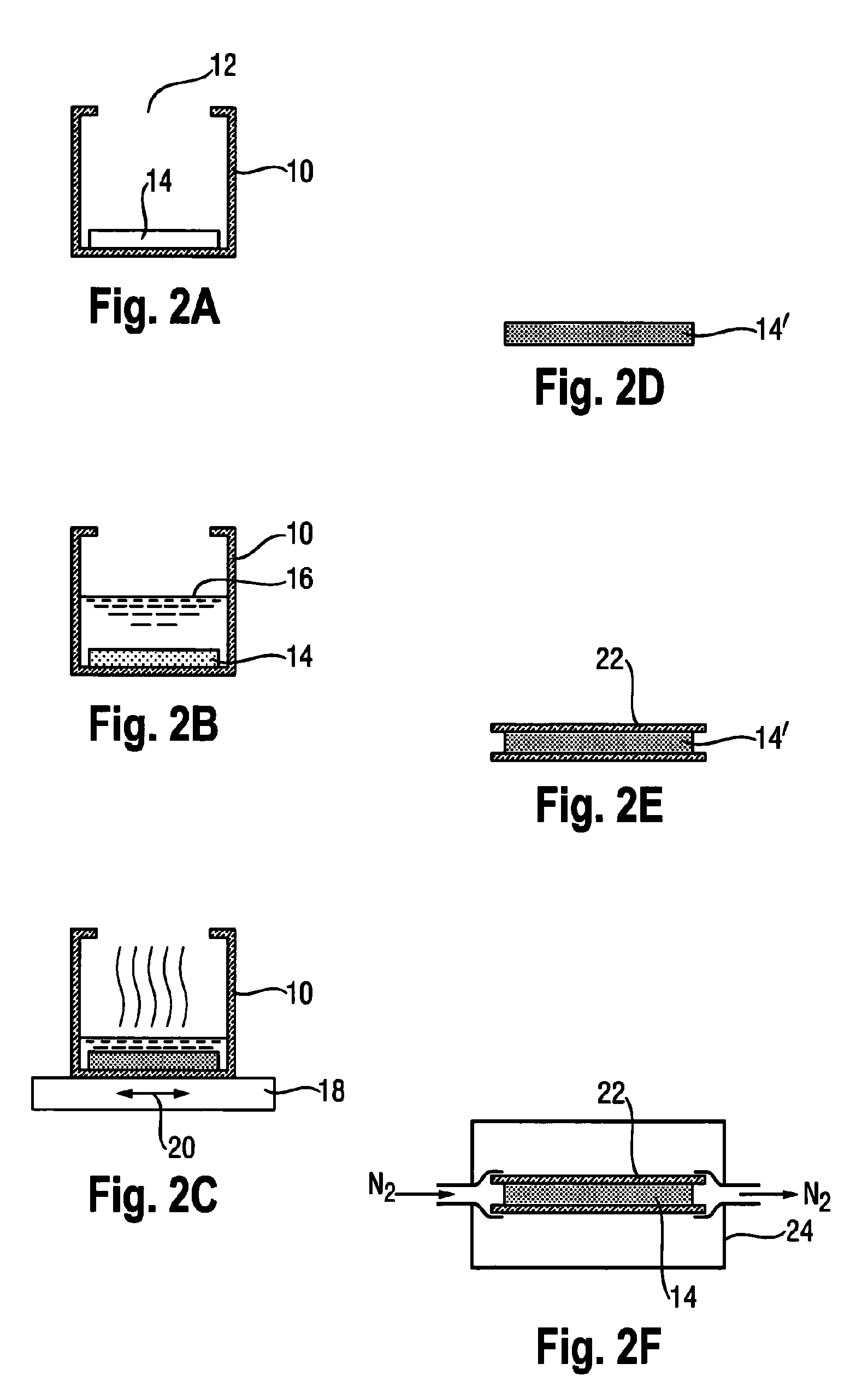Porous carbon electrode with conductive polymer coating
a technology of conductive polymer coating and porous carbon, which is applied in the direction of electrochemical devices, inorganic chemistry, packaging, etc., can solve the problems of high cost limited performance, and inhibited commercial application of noble metal materials, so as to improve the capacitance performance of active materials and improve the electrode utilizing such materials
- Summary
- Abstract
- Description
- Claims
- Application Information
AI Technical Summary
Benefits of technology
Problems solved by technology
Method used
Image
Examples
Embodiment Construction
[0062]Turning first of all to FIGS. 1A and 1B, the non-graphitic carbon material underlying the present invention will first be described. FIG. 1A shows, in the diagram at the top left, how the structure of non-graphitic carbon changes as it is subjected to heat treatment (pyrolysis) at different temperatures. It can be seen from this diagram that in the temperature range of 600° C. to 1000° C. to which the present invention relates, i.e. 873 to 1273 K, the structure comprises a plurality of randomly oriented small graphene stacks 2. The stacks themselves comprise sheets 4 of carbon atoms arranged in a generally hexagonal arrangement. Each sheet 4 shown as a rectangle in FIG. 1B is termed a graphene. The carbon atoms in each graphene have no positional correlation with the position of carbon atoms in the graphenes below and above.
[0063]As the heat treatment temperature increases, the non-graphitic carbon becomes progressively more ordered and, at a temperature above 2273° K, i.e. 20...
PUM
| Property | Measurement | Unit |
|---|---|---|
| Temperature | aaaaa | aaaaa |
| Temperature | aaaaa | aaaaa |
| Pore size | aaaaa | aaaaa |
Abstract
Description
Claims
Application Information
 Login to View More
Login to View More - R&D
- Intellectual Property
- Life Sciences
- Materials
- Tech Scout
- Unparalleled Data Quality
- Higher Quality Content
- 60% Fewer Hallucinations
Browse by: Latest US Patents, China's latest patents, Technical Efficacy Thesaurus, Application Domain, Technology Topic, Popular Technical Reports.
© 2025 PatSnap. All rights reserved.Legal|Privacy policy|Modern Slavery Act Transparency Statement|Sitemap|About US| Contact US: help@patsnap.com



